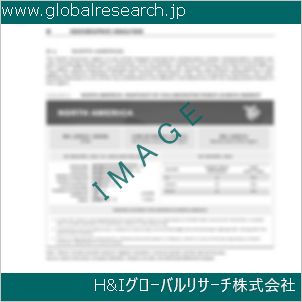1 Orbital Tissue Expander Market Overview
1.1 Product Overview and Scope of Orbital Tissue Expander
1.2 Orbital Tissue Expander Segment by Type
1.2.1 Global Orbital Tissue Expander Market Value Comparison by Type (2023-2029)
1.2.2 Hard Spherical Implants
1.2.3 Inflatable Soft Tissue Expanders
1.2.4 Hydrogel Expander Implants
1.3 Orbital Tissue Expander Segment by Application
1.3.1 Global Orbital Tissue Expander Market Value by Application: (2023-2029)
1.3.2 Hospitals
1.3.3 Ambulatory Surgical Centers
1.3.4 Specialty Clinics
1.4 Global Orbital Tissue Expander Market Size Estimates and Forecasts
1.4.1 Global Orbital Tissue Expander Revenue 2018-2029
1.4.2 Global Orbital Tissue Expander Sales 2018-2029
1.4.3 Global Orbital Tissue Expander Market Average Price (2018-2029)
1.5 Assumptions and Limitations
2 Orbital Tissue Expander Market Competition by Manufacturers
2.1 Global Orbital Tissue Expander Sales Market Share by Manufacturers (2018-2023)
2.2 Global Orbital Tissue Expander Revenue Market Share by Manufacturers (2018-2023)
2.3 Global Orbital Tissue Expander Average Price by Manufacturers (2018-2023)
2.4 Global Orbital Tissue Expander Industry Ranking 2021 VS 2022 VS 2023
2.5 Global Key Manufacturers of Orbital Tissue Expander, Manufacturing Sites & Headquarters
2.6 Global Key Manufacturers of Orbital Tissue Expander, Product Type & Application
2.7 Orbital Tissue Expander Market Competitive Situation and Trends
2.7.1 Orbital Tissue Expander Market Concentration Rate
2.7.2 The Global Top 5 and Top 10 Largest Orbital Tissue Expander Players Market Share by Revenue
2.7.3 Global Orbital Tissue Expander Market Share by Company Type (Tier 1, Tier 2 and Tier 3)
2.8 Manufacturers Mergers & Acquisitions, Expansion Plans
3 Orbital Tissue Expander Retrospective Market Scenario by Region
3.1 Global Orbital Tissue Expander Market Size by Region: 2018 Versus 2022 Versus 2029
3.2 Global Orbital Tissue Expander Global Orbital Tissue Expander Sales by Region: 2018-2029
3.2.1 Global Orbital Tissue Expander Sales by Region: 2018-2023
3.2.2 Global Orbital Tissue Expander Sales by Region: 2024-2029
3.3 Global Orbital Tissue Expander Global Orbital Tissue Expander Revenue by Region: 2018-2029
3.3.1 Global Orbital Tissue Expander Revenue by Region: 2018-2023
3.3.2 Global Orbital Tissue Expander Revenue by Region: 2024-2029
3.4 North America Orbital Tissue Expander Market Facts & Figures by Country
3.4.1 North America Orbital Tissue Expander Market Size by Country: 2018 VS 2022 VS 2029
3.4.2 North America Orbital Tissue Expander Sales by Country (2018-2029)
3.4.3 North America Orbital Tissue Expander Revenue by Country (2018-2029)
3.4.4 United States
3.4.5 Canada
3.5 Europe Orbital Tissue Expander Market Facts & Figures by Country
3.5.1 Europe Orbital Tissue Expander Market Size by Country: 2018 VS 2022 VS 2029
3.5.2 Europe Orbital Tissue Expander Sales by Country (2018-2029)
3.5.3 Europe Orbital Tissue Expander Revenue by Country (2018-2029)
3.5.4 Germany
3.5.5 France
3.5.6 U.K.
3.5.7 Italy
3.5.8 Russia
3.6 Asia Pacific Orbital Tissue Expander Market Facts & Figures by Country
3.6.1 Asia Pacific Orbital Tissue Expander Market Size by Country: 2018 VS 2022 VS 2029
3.6.2 Asia Pacific Orbital Tissue Expander Sales by Country (2018-2029)
3.6.3 Asia Pacific Orbital Tissue Expander Revenue by Country (2018-2029)
3.6.4 China
3.6.5 Japan
3.6.6 South Korea
3.6.7 India
3.6.8 Australia
3.6.9 China Taiwan
3.6.10 Indonesia
3.6.11 Thailand
3.6.12 Malaysia
3.7 Latin America Orbital Tissue Expander Market Facts & Figures by Country
3.7.1 Latin America Orbital Tissue Expander Market Size by Country: 2018 VS 2022 VS 2029
3.7.2 Latin America Orbital Tissue Expander Sales by Country (2018-2029)
3.7.3 Latin America Orbital Tissue Expander Revenue by Country (2018-2029)
3.7.4 Mexico
3.7.5 Brazil
3.7.6 Argentina
3.7.7 Colombia
3.8 Middle East and Africa Orbital Tissue Expander Market Facts & Figures by Country
3.8.1 Middle East and Africa Orbital Tissue Expander Market Size by Country: 2018 VS 2022 VS 2029
3.8.2 Middle East and Africa Orbital Tissue Expander Sales by Country (2018-2029)
3.8.3 Middle East and Africa Orbital Tissue Expander Revenue by Country (2018-2029)
3.8.4 Turkey
3.8.5 Saudi Arabia
3.8.6 UAE
4 Segment by Type
4.1 Global Orbital Tissue Expander Sales by Type (2018-2029)
4.1.1 Global Orbital Tissue Expander Sales by Type (2018-2023)
4.1.2 Global Orbital Tissue Expander Sales by Type (2024-2029)
4.1.3 Global Orbital Tissue Expander Sales Market Share by Type (2018-2029)
4.2 Global Orbital Tissue Expander Revenue by Type (2018-2029)
4.2.1 Global Orbital Tissue Expander Revenue by Type (2018-2023)
4.2.2 Global Orbital Tissue Expander Revenue by Type (2024-2029)
4.2.3 Global Orbital Tissue Expander Revenue Market Share by Type (2018-2029)
4.3 Global Orbital Tissue Expander Price by Type (2018-2029)
5 Segment by Application
5.1 Global Orbital Tissue Expander Sales by Application (2018-2029)
5.1.1 Global Orbital Tissue Expander Sales by Application (2018-2023)
5.1.2 Global Orbital Tissue Expander Sales by Application (2024-2029)
5.1.3 Global Orbital Tissue Expander Sales Market Share by Application (2018-2029)
5.2 Global Orbital Tissue Expander Revenue by Application (2018-2029)
5.2.1 Global Orbital Tissue Expander Revenue by Application (2018-2023)
5.2.2 Global Orbital Tissue Expander Revenue by Application (2024-2029)
5.2.3 Global Orbital Tissue Expander Revenue Market Share by Application (2018-2029)
5.3 Global Orbital Tissue Expander Price by Application (2018-2029)
6 Key Companies Profiled
6.1 Dalpasso
6.1.1 Dalpasso Corporation Information
6.1.2 Dalpasso Description and Business Overview
6.1.3 Dalpasso Orbital Tissue Expander Sales, Revenue and Gross Margin (2018-2023)
6.1.4 Dalpasso Orbital Tissue Expander Product Portfolio
6.1.5 Dalpasso Recent Developments/Updates
6.2 FCI Ophthalmics
6.2.1 FCI Ophthalmics Corporation Information
6.2.2 FCI Ophthalmics Description and Business Overview
6.2.3 FCI Ophthalmics Orbital Tissue Expander Sales, Revenue and Gross Margin (2018-2023)
6.2.4 FCI Ophthalmics Orbital Tissue Expander Product Portfolio
6.2.5 FCI Ophthalmics Recent Developments/Updates
6.3 Innovia
6.3.1 Innovia Corporation Information
6.3.2 Innovia Description and Business Overview
6.3.3 Innovia Orbital Tissue Expander Sales, Revenue and Gross Margin (2018-2023)
6.3.4 Innovia Orbital Tissue Expander Product Portfolio
6.3.5 Innovia Recent Developments/Updates
6.4 Bio-Eye Orbital Implants
6.4.1 Bio-Eye Orbital Implants Corporation Information
6.4.2 Bio-Eye Orbital Implants Description and Business Overview
6.4.3 Bio-Eye Orbital Implants Orbital Tissue Expander Sales, Revenue and Gross Margin (2018-2023)
6.4.4 Bio-Eye Orbital Implants Orbital Tissue Expander Product Portfolio
6.4.5 Bio-Eye Orbital Implants Recent Developments/Updates
6.5 IOP Ophthalmics
6.5.1 IOP Ophthalmics Corporation Information
6.5.2 IOP Ophthalmics Description and Business Overview
6.5.3 IOP Ophthalmics Orbital Tissue Expander Sales, Revenue and Gross Margin (2018-2023)
6.5.4 IOP Ophthalmics Orbital Tissue Expander Product Portfolio
6.5.5 IOP Ophthalmics Recent Developments/Updates
6.6 Silimed
6.6.1 Silimed Corporation Information
6.6.2 Silimed Description and Business Overview
6.6.3 Silimed Orbital Tissue Expander Sales, Revenue and Gross Margin (2018-2023)
6.6.4 Silimed Orbital Tissue Expander Product Portfolio
6.6.5 Silimed Recent Developments/Updates
6.7 Network Medical Products
6.6.1 Network Medical Products Corporation Information
6.6.2 Network Medical Products Description and Business Overview
6.6.3 Network Medical Products Orbital Tissue Expander Sales, Revenue and Gross Margin (2018-2023)
6.4.4 Network Medical Products Orbital Tissue Expander Product Portfolio
6.7.5 Network Medical Products Recent Developments/Updates
7 Industry Chain and Sales Channels Analysis
7.1 Orbital Tissue Expander Industry Chain Analysis
7.2 Orbital Tissue Expander Key Raw Materials
7.2.1 Key Raw Materials
7.2.2 Raw Materials Key Suppliers
7.3 Orbital Tissue Expander Production Mode & Process
7.4 Orbital Tissue Expander Sales and Marketing
7.4.1 Orbital Tissue Expander Sales Channels
7.4.2 Orbital Tissue Expander Distributors
7.5 Orbital Tissue Expander Customers
8 Orbital Tissue Expander Market Dynamics
8.1 Orbital Tissue Expander Industry Trends
8.2 Orbital Tissue Expander Market Drivers
8.3 Orbital Tissue Expander Market Challenges
8.4 Orbital Tissue Expander Market Restraints
9 Research Finding and Conclusion
10 Methodology and Data Source
10.1 Methodology/Research Approach
10.1.1 Research Programs/Design
10.1.2 Market Size Estimation
10.1.3 Market Breakdown and Data Triangulation
10.2 Data Source
10.2.1 Secondary Sources
10.2.2 Primary Sources
10.3 Author List
10.4 Disclaimer
| ※参考情報 眼窩組織エキスパンダーは、主に眼窩(眼球を取り巻く骨の空間)内の軟部組織を伸ばすために使用される医療機器です。これらのエキスパンダーは、特定の条件下で組織の再建や修復を行うために設計されています。以下に、眼窩組織エキスパンダーの定義、特徴、種類、用途、関連技術について詳しく説明いたします。 まず、眼窩組織エキスパンダーの「定義」についてですが、基本的には、特定の空間に挿入され、徐々に体積を増やすことで周囲の組織を引き伸ばす装置です。これにより、新たな組織の生成を助けることが可能となり、最終的には必要とされる形や機能を持つ組織の再生が期待されます。 「特徴」としては、これらのエキスパンダーは通常、シリコンや生分解性材料から作られています。これにより、体内での生存適応能力が高まり、体液と反応しないことが求められます。また、エキスパンダーは通常小型であり、眼窩の特定の位置に配置されることを考慮して設計されています。特に重要なのは、眼球や視神経に対して影響を与えないように注意を払う必要がある点です。挿入後は、エキスパンダー内部に生理食塩水や空気を充填して、徐々に体積を増加させることで周囲の組織をゆっくりと引き伸ばしていく仕組みです。 「種類」について触れると、眼窩組織エキスパンダーにはいくつかのタイプがあります。主に固定式と可変式のエキスパンダーがあります。固定式は、特定のサイズに設計され、挿入後にそのままとなります。一方、可変式は内部にポートを持ち、外部からの注入や排出を通じてサイズを調整することができます。この可変性が、患者の治療においてより柔軟なアプローチを可能にしています。 「用途」としては、眼窩組織エキスパンダーは、眼球の挙上や眼瞼の再建、外傷後の組織修復、不足した組織の再生、さらには先天性の異常に対する治療など、さまざまな医療現場で利用されています。特に、外傷や手術後の修復においては、組織の変形や失われた機能の回復を目指す際に非常に重要な役割を果たします。また、眼窩内に挿入したエキスパンダーによって周囲の組織が引き伸ばされることで、新たに生成される組織が形成され、最終的に健康な状態への復帰を助けることができます。 「関連技術」には、バイオ材料の進化、画像診断技術、ロボティクスを用いた手術技術があります。バイオ材料の進化にさまざまな生分解性材料が開発され、これによりエキスパンダーの生体適合性が向上しました。MRIやCTスキャンなどの画像診断技術は、エキスパンダーの配置や組織の変化をモニタリングするために重要であり、術前・術後の評価に欠かせません。また、ロボット支援手術は、精密な手術を可能にし、患者への負担を軽減する役割を果たしています。 眼窩組織エキスパンダーは、現代の医学において重要な治療手段であり、視覚機能や眼の美容的な側面の両面で患者の生活の質を向上させることができます。適切な使用により、眼科領域での治療の可能性を大きく広げると同時に、患者の安全性と健康を確保することが求められています。今後も、この技術の進展とともに新たな応用が期待され、より多くの患者に恩恵をもたらすことでしょう。 |
❖ 免責事項 ❖
http://www.globalresearch.jp/disclaimer












